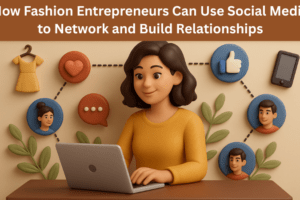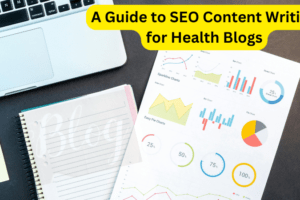Your website is one of the most powerful tools you have. Knowing how to use it can help you expand and boost your brand and get customers.
But, of course, the visitors must like spending time on your pages for it to work. And if that’s something you want to work on, here are six ways to improve your website’s user experience.
Still, before we dive into those, we should touch on the basics and see what UX is exactly and why you should care about it or you can hire a Digital Agency
# What is UX?
User experience (UX) also goes by the name of web design, and it’s a set of principles that explain how the user will feel after using your website.
If you do everything by the book, your site will be easy to get around, and people will love it.
On top of that, you also want to stand out from the competition. It’s not an easy task, but a strong website and smart investing in PPC can get you there. People will know about your brand and want to work with you because they’ll find you relevant.
And now that you understand the bases of benefits good UX can bring you, we can dive into how you can get them. So, let’s start.
1. Mobile-First Design
People have loved using their smartphones to search the web for years, but recently we’ve hit a new dimension. More than half of all searches on the web now are carried out from mobile devices, so Google switched to mobile-first indexing.
It means they’ll take the mobile version of your website as a primary one when indexing your pages.
Hence, you won’t rank well if your site doesn’t work well on small screens. You must put mobile users in the front and make your site suitable for them.
Responsive design is the best route to go here. It allows your site to adapt to the screen size it’s loaded on, so you don’t have to create separate versions as you did in the past.
It’s a great time-saver, and it makes updating your site and optimizing content a breeze.
2. Offer Relevant and Valuable Content
The chances are that you’ve heard that old saying marketers love to throw around — content is king. It’s a cliche, but it’s also true.
People come to your site to get some information from your content, and if what you offer is good, they’ll stick around.
The kind of content you’ll create will depend on what you do and your target audience. Videos, infographics, and statistics can all work great.
However, experts from Digital Agency stress that you can’t go wrong with blog posts. Use the right keywords and write quality content, and it’ll bring people to your pages for sure.
If you’re unsure what you can write about, look at your competitors’ sites for inspiration. Focus on guides and how-to articles relevant to your industry. These are always popular searches and could make great evergreen articles.
3. Improve Your Website’s Loading Speed
We live in a time where everything is within a click away. People are impatient, and if your pages need more than three seconds to load, they’ll bounce right back to search.
So one of the best ways to improve your website’s user experience is to improve your site’s loading speed.
Here’s how you can do that.
- Compress your images. Make the pictures on your site smaller so they can load faster. If high-resolution photos are essential to your business, create a separate page to display them.
- Disable video autoplay. Videos that play themselves use a lot of data and can be annoying. Let users choose if they want to watch them or not.
- Check your hosting. Your website’s slow loading times may have nothing to do with you. Talk to your hosting provider and see if they have any faster packages.
- Remove bad backlinks. A bad link on your site won’t pop that 404 right away. It’ll try to load the page first, putting unnecessary stress on your server.
4. Make Navigation Simple
No PPC marketing can help save your business if your site navigation is terrible. That may have sounded a bit harsh, but making your site intuitive and easy to use is vital from the UX standpoint.
Think about it this way. If your site is simple to navigate, people won’t have any trouble finding what they’re looking for.
Your visitors will feel involved and spend more time exploring your pages. And the longer they are on your site, the more likely they will convert.
So, a good user experience will lead to a rise in sales. You’ll keep your customers happy and grow your revenue simultaneously. Not a bad deal if you ask us.
5. Use Whitespace
If you want people to have a good time on your site, it mustn’t feel cramped or claustrophobic.
We’ve all seen sites filled to the brim with banners, toolbars, and buttons, and no one likes them.
You don’t make it more valuable when you put too much content on a single page. You’ll confuse the visitors and make them leave your site in frustration.
For the best results, you want to leave some empty space on all your pages to draw visitors’ attention to the content.
Whitespace will make the content scannable and draw the users’ eyes to the CTAs as they’ll stand out more. This simple trick will make your site more attractive, reduce bounce rate, and boost your conversions.
6. Be Consistent
Building a website that will attract people is always a plus, but you’ll have to deliver on the expectations they now have.
All your pages must look uniform, and all the images and illustrations have to match.
If you don’t use the same title, headings, and colors across your site, people will feel like they’re jumping between different domains and won’t be a fan of it.
On the other hand, you’ll improve both UX and SEO with the proper formatting in place. So, even more, people will find your site through organic searches, and you’ll get more customers.
The Bottom Line
As you can see, there are plenty of ways to improve your website’s user experience, and you should use them all. Your site visitors are your ideal customers, and if you make them visit your site regularly, they’ll be happy to do business with you.














